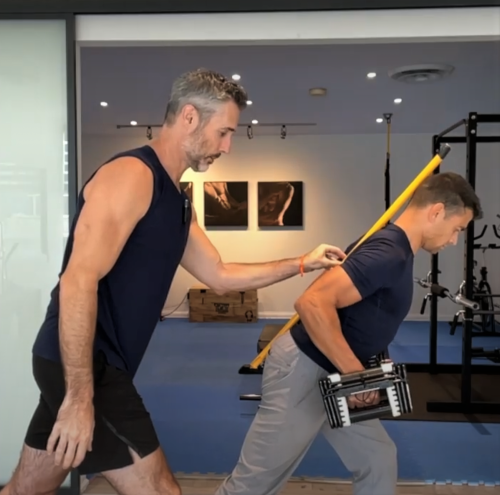
Shape Up for the Work Week
Originally Written By: Alex Allan | ![]()
Original Title: How to create a workout plan based on the type of job you do
Professional athletes train specifically in the gym to perform better on the job and reduce the chance of injury as they mature. Why don’t we?
Most of us spend 30 to 50 hours per week in positions that pull us out of alignment – curling up our bodies like a near-empty tube of toothpaste. Different types of careers can each have a distinct impact on posture, strength and conditioning.
This can be countered by a workout program that supports our individual needs. Instead of general plans found with a Google search for “build muscle” or “lose fat,” it is time to marry our aesthetic goals with something more specific.
Find out where you fit in below and use these tips to define your own plan:
1. Chained to a desk
A 2006 study from the Spine Journal found that sustaining mid- to end-range slumped sitting postures resulted in relaxation and weakening of the spinal stabilizing muscles. Another 2010 study from the Journal of Manual Therapy found that slumped sitting was also associated with greater forward translation of the head – putting increased tension into the structures on the back of the neck. Not only can this cause pain, but apparently it also makes you weaker. A 1999 study from the Archives of Physical Medicine and Rehabilitation found that slumped lifting posture during lateral shoulder raises decreased strength by 16.2 per cent.
Workout plan should include: Two exercises targeting the rear shoulder and scapula for every one front pressing exercise, hip and chest stretches, a dynamic warm-up to counteract effects of workweek posture, core and glute stability and cardiovascular exercise.
Quick fix: Get loose: Stretch both the hips and upper body at the same time by starting in a split-lunge position with your hands up high on either side of a door frame. Bend your knees slightly and lower your body down. as your arms lengthen you should feel a chest stretch. Push your front knee and hips forward to also feel a slight pull in the back thigh. Hold 30 seconds.
2. On your feet all day
A 2002 review from the journal Work indicated that bad vein circulation and lower back and foot muscle pain were found to be associated with standing for eight or more hours at work. An ergonomics fact sheet from Nova Scotia’s occupational health and safety division recommends calf raises for circulation and squatting for joint movement.
Workout plan should include: Ankle mobility, isolated core work on the floor, cat/camel and glute stretches and squatting.
Quick fix: Get loose: Stand on a step with your heels hanging off the edge. Push off the balls of the feet and slowly rise up. Return to the start position and hold for five seconds. Repeat.
Get low: From a standing position forward bend at the hips and reach your palms down to a step that you can reach without rounding your lower back. Hold the hamstring stretch for 10 seconds then drop your hips into a squat. As you hold the squat, try to lift your arms overhead. Slowly rise up to the start position with your hands over head. Repeat.
3. Manual labourers
A 2005 study from Applied Ergonomics focused on how a dynamic warm-up followed by key stretches affected flexibility, strength and endurance. The results indicated increased range of motion and muscular endurance with no change in strength.
Workout plan should include: Trigger point release with foam roller, hip stretches, dynamic movement in three planes of motion, low back and glute stability, proper squatting, carrying, pulling and pushing exercises for endurance and strength
Quick fix: Get loose: Before work include different arm swings combined with knee bends, shoulder lifts, leg kicks, spinal movements, transfer of body weight from side to side and light jogging. Each morning warm-up exercise session should end with stretching, particularly of the hamstrings, quadriceps and calf muscles.
